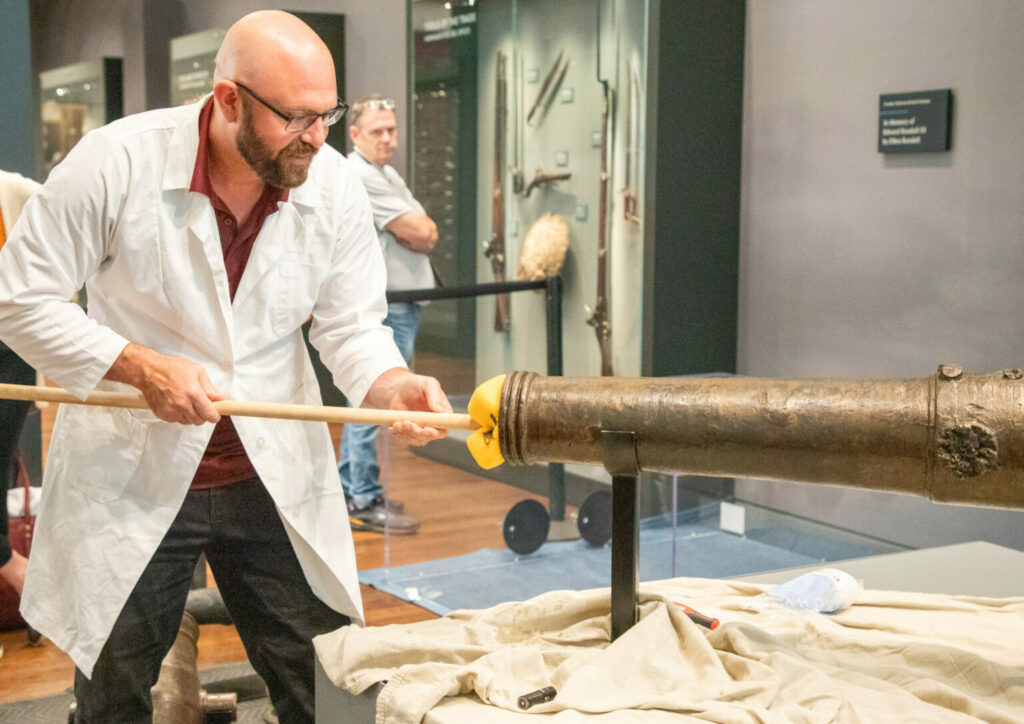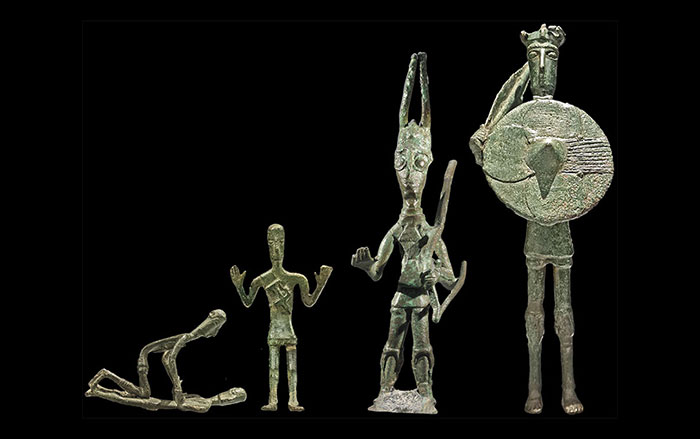COLLEGE STATION, TEXAS—According to a statement released by Texas A&M University, scientists from the Nautical Archaeology Program at Texas A&M University worked with researchers at The Alamo to conserve an historic bronze cannon housed in The Alamo Museum. This four-pounder was cast in Mexico and was used in the Battle of Medina in 1813, the Battle of Concepción in 1835, and the Battle of the Alamo in 1836. Recently, a white, chalky substance had been found growing on its surface. “Our lab primarily deals with material from underwater archaeological sites, and because so many things that are underwater happen to be ships, we deal with a lot of cannons,” explained Christopher Dostal of Texas A&M University. Through experimenting with the application of different chemicals on bronze blocks, the scientists were able to determine that the formation of the white substance on the cannon may be a result of chemicals used to conserve it in 2008 and 2019. The researchers also learned that the white substance could be removed by applying a dilute solution of formic acid with a tennis ball on a stick to the cannon’s surface. Dostal said that it was important to treat the cannon, because the possible long-term side effects of leaving the white substance on the metal are unknown. “In this scenario, we did not want to find out through inaction,” he said. To read about the underwater search for evidence of Captain Henry Morgan's raid on Panama City, go to "Pirates of the Original Panama Canal."












